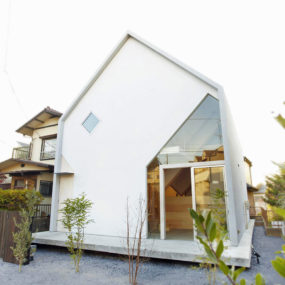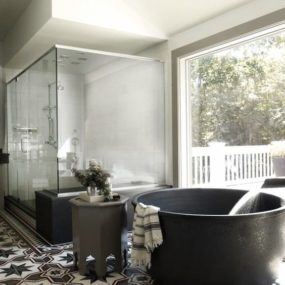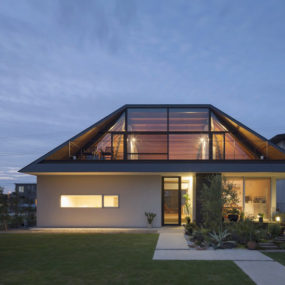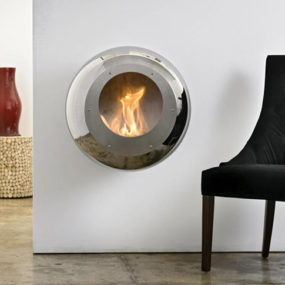
SGNW House by Metropole Architects is located on a site in the Zimbali Forest Estate in South Africa. The client’s brief for Metropole Architects was to create a Zen dream home that included water as a primary component in the design. Metropole Architects accommodated the request by including two Koi ponds in the design – connected by an underground tunnel, an architectural water feature and a swimming pool with glass infinity edge. The architects made that sure water took a central role within the home by dissecting the interior volume with a bridge-covered pool starting at the front entry and ending at the back terrace.

Zimbali means “The Valley of Flowers” in Zulu and the site is rich in indigenous fauna and flora. For this reason, the architects chose to design SGNW House with natural materials including timber, off shutter concrete, stone cladding, large amounts of glazings and the incredible water features. Layered into this neutral palette are architectural details influenced by both traditional Japanese construction and Frank Lloyd Wright’s Fallingwater residence.
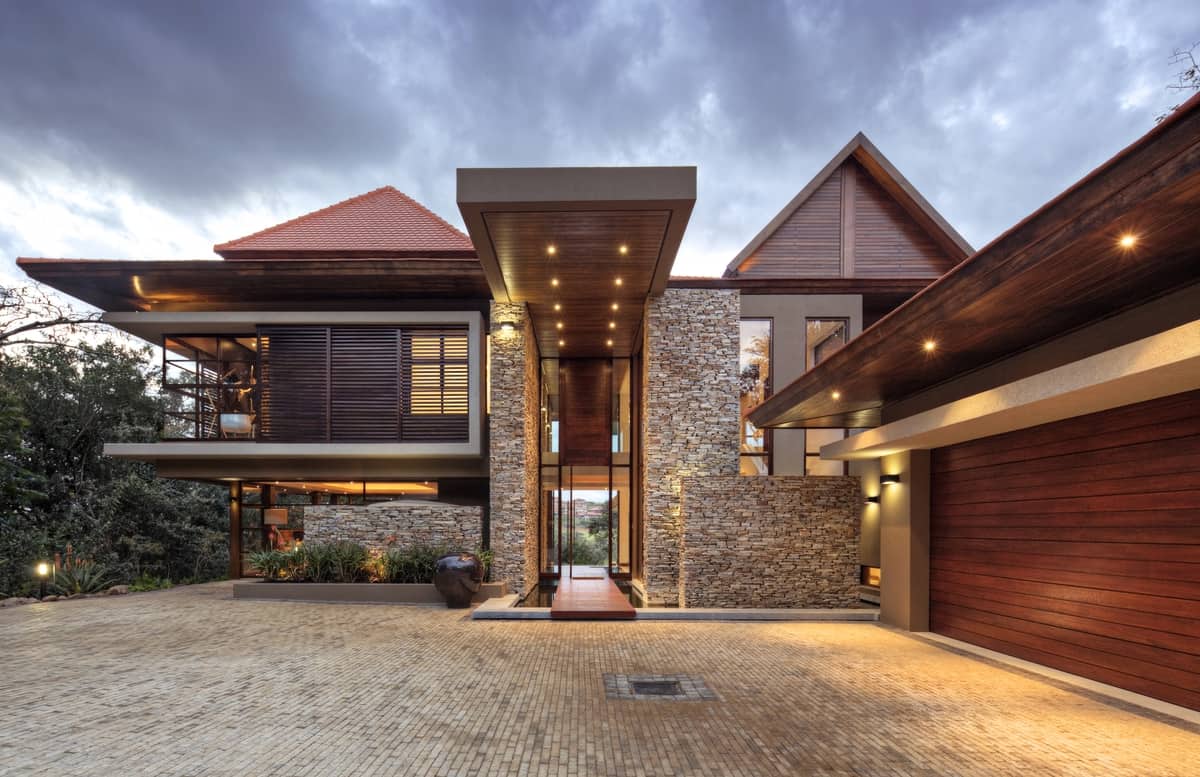
The Koi pond begins just off the driveway and leads up to the main entrance which is accessed by a timber bridge.

The Koi pond continues into and through the home, as does the bridge that spans it. Both stop just short of the architectural water feature located between the Koi pond and the swimming pool.
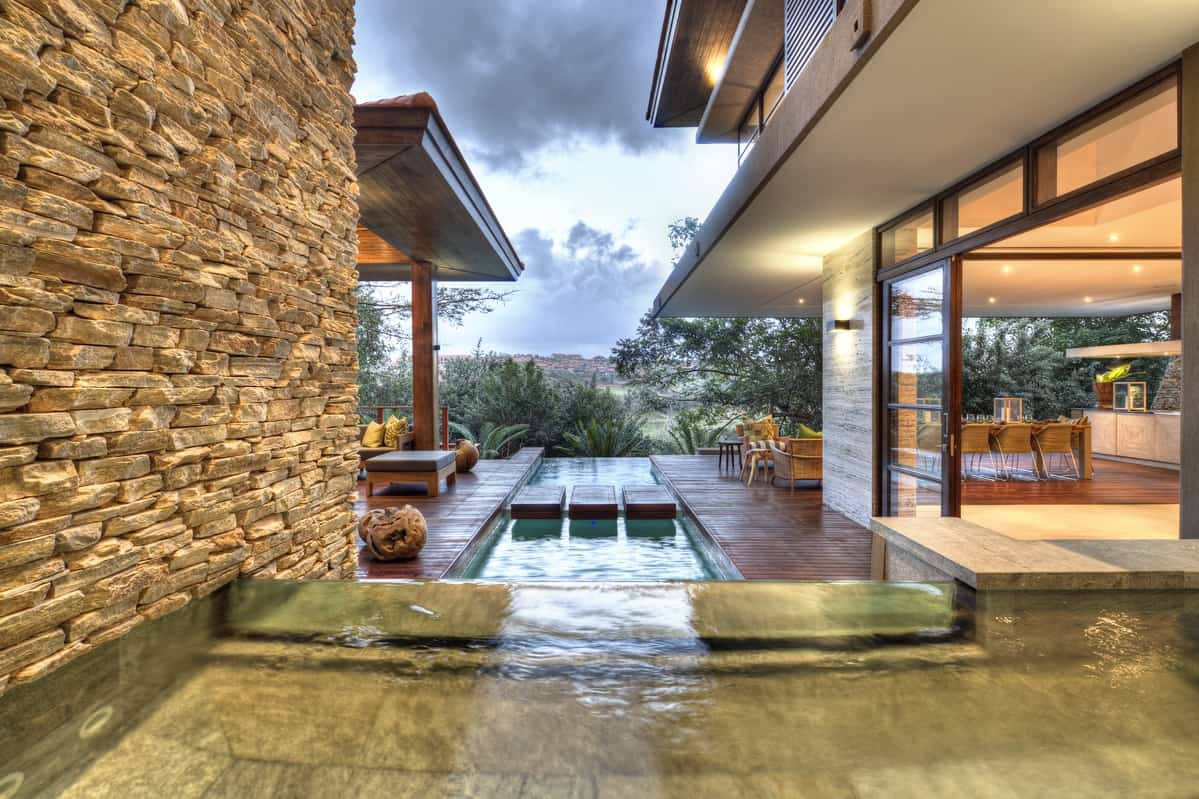
The swimming pool wraps around two sides of the terrace and on one side – directly in front of the architectural water feature – are three steps that lead to a pagoda lounge area.
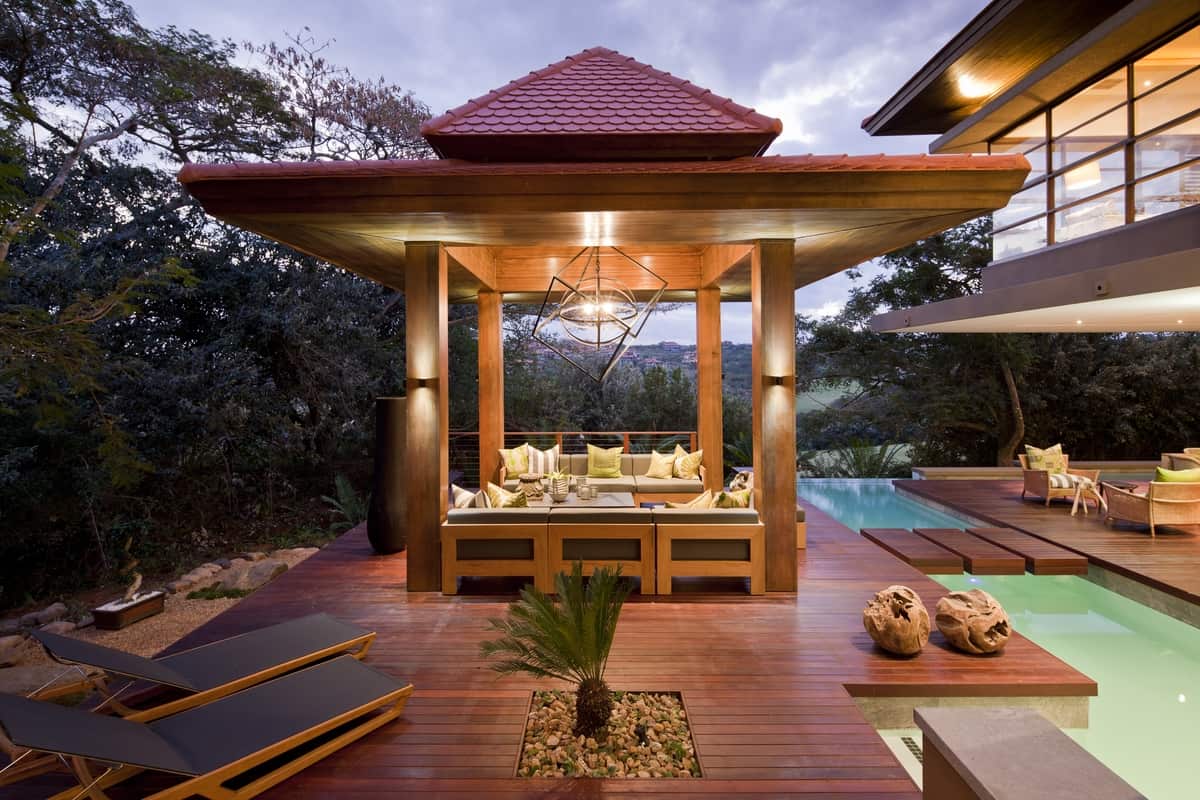
The Pagoda is a stunning example of Japanese influence. In Japan, a garden has the status of artwork and always includes water and a dry rock or sand garden – representing the Buddhist Ying and Yang. Japanese architecture also prominently features rooflines and usually includes oversized eaves with removable walls to connect the inside and outdoor zones. All these features are prominently displayed in the pagoda zone.
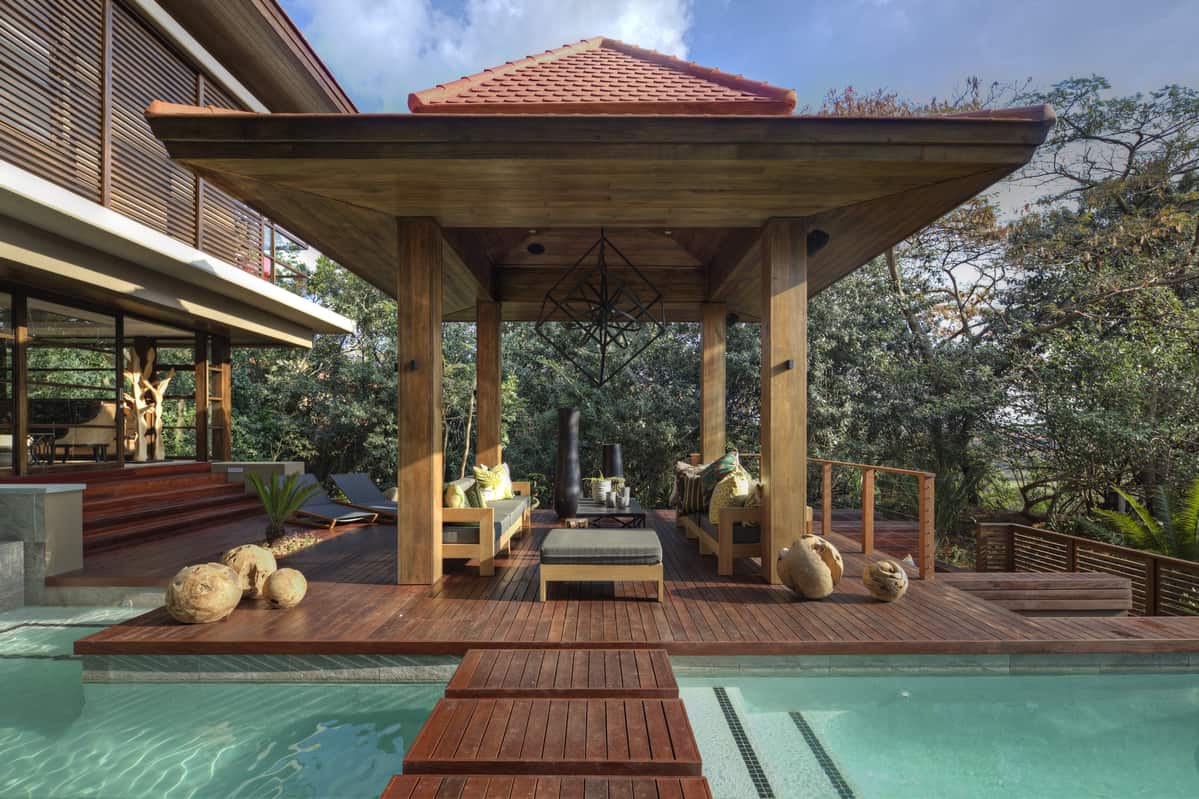
Another impressive feature of the pagoda is the immense and totally awesome light pendent suspended over the lounge area.

Just across the pool is another small lounge area, the al fresco dining area and a large outdoor kitchen.

Easy access to the swimming pool is via the three steps that cross the pool.
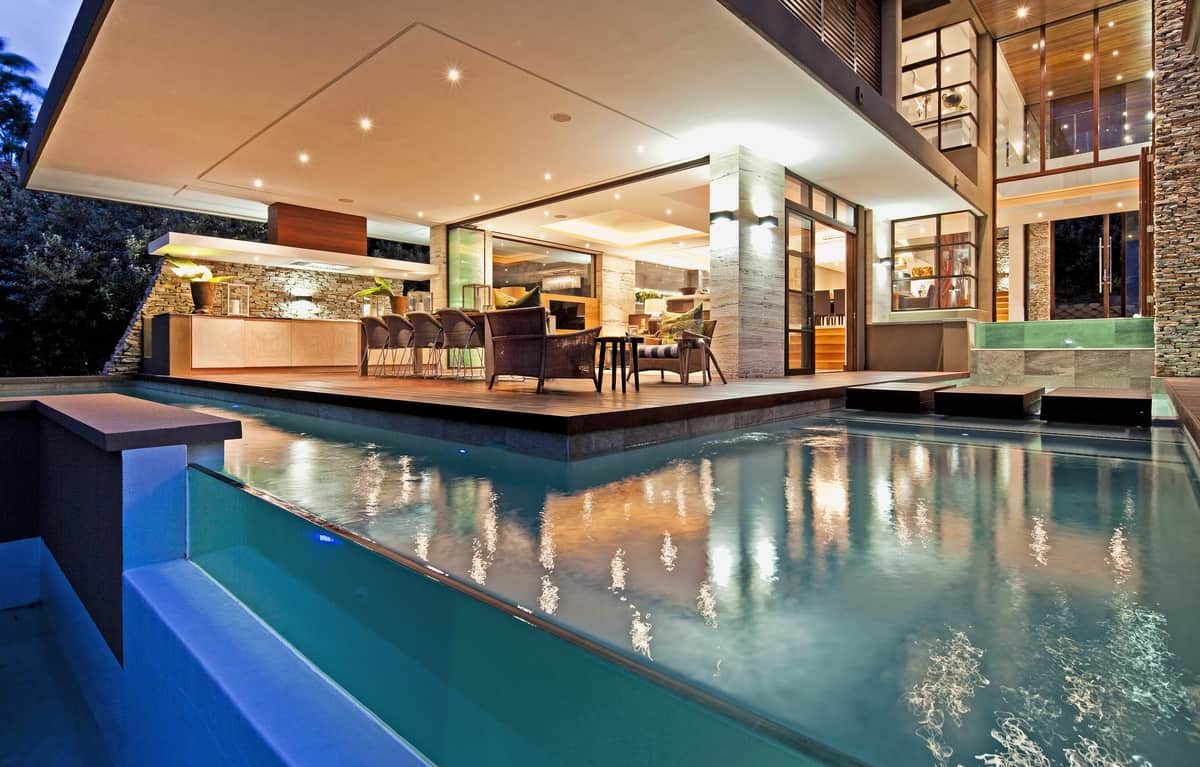
The swimming pool features a glass infinity edge that visually lines up with the three bridge steps, the architectural water feature and the foyer in the front of the home. It also incorporates two waterfalls, which by nature of the falling water, echoes the evocative sound of moving water throughout the home.
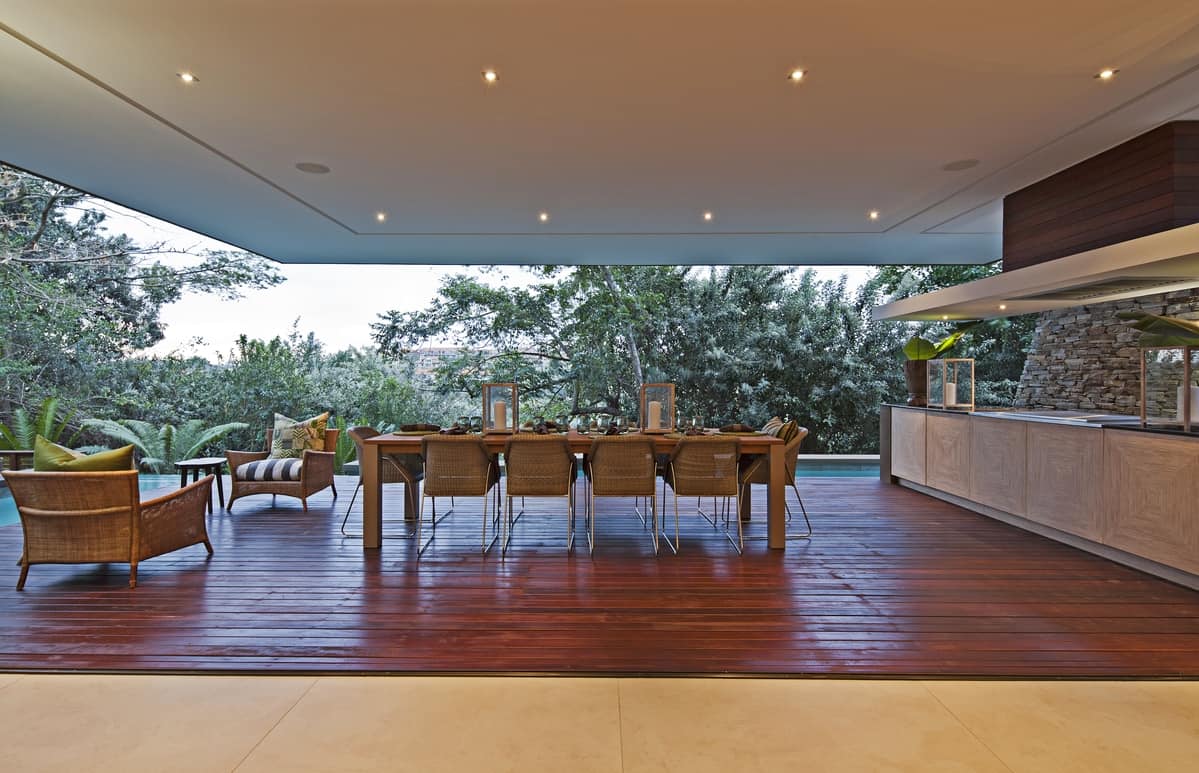
The outdoor kitchen and al fresco area are located beneath the cantilevered master suite which projects an incredible 6 meters over the terrace.
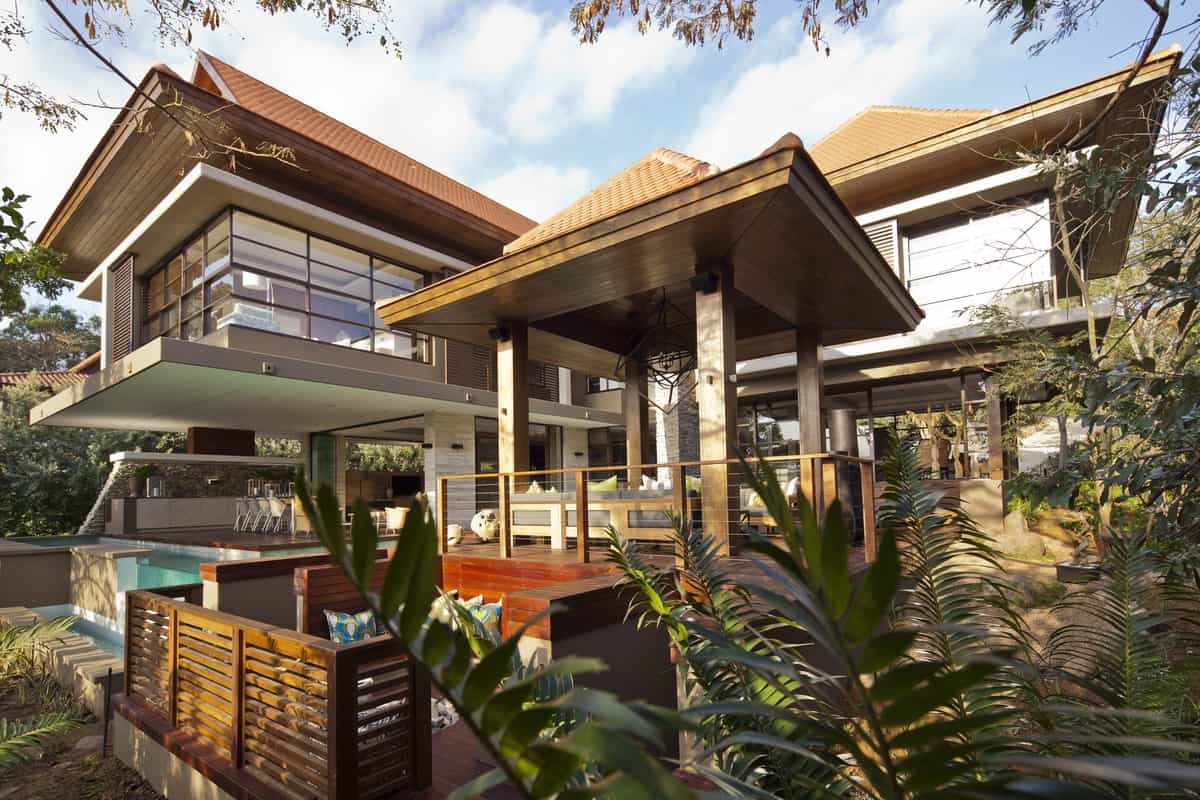
There is a third outdoor seating area located in front of the pagoda on a lower level. Surrounded by fencing and open to the garden this lounge area is also open to the sky above making it the perfect place for star gazing on a clear night.
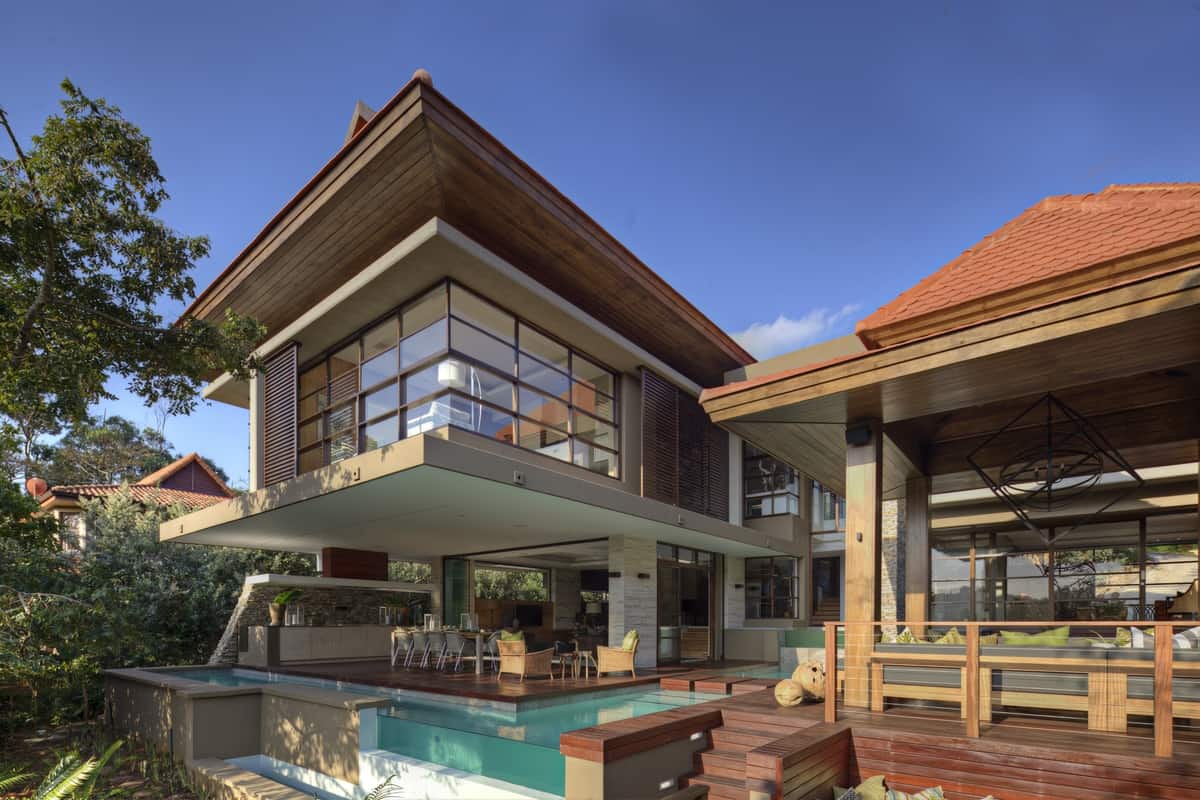
This lower lounge area is is accessed by a short flight of stairs with lights embedded in its side walls for safe passage at night.
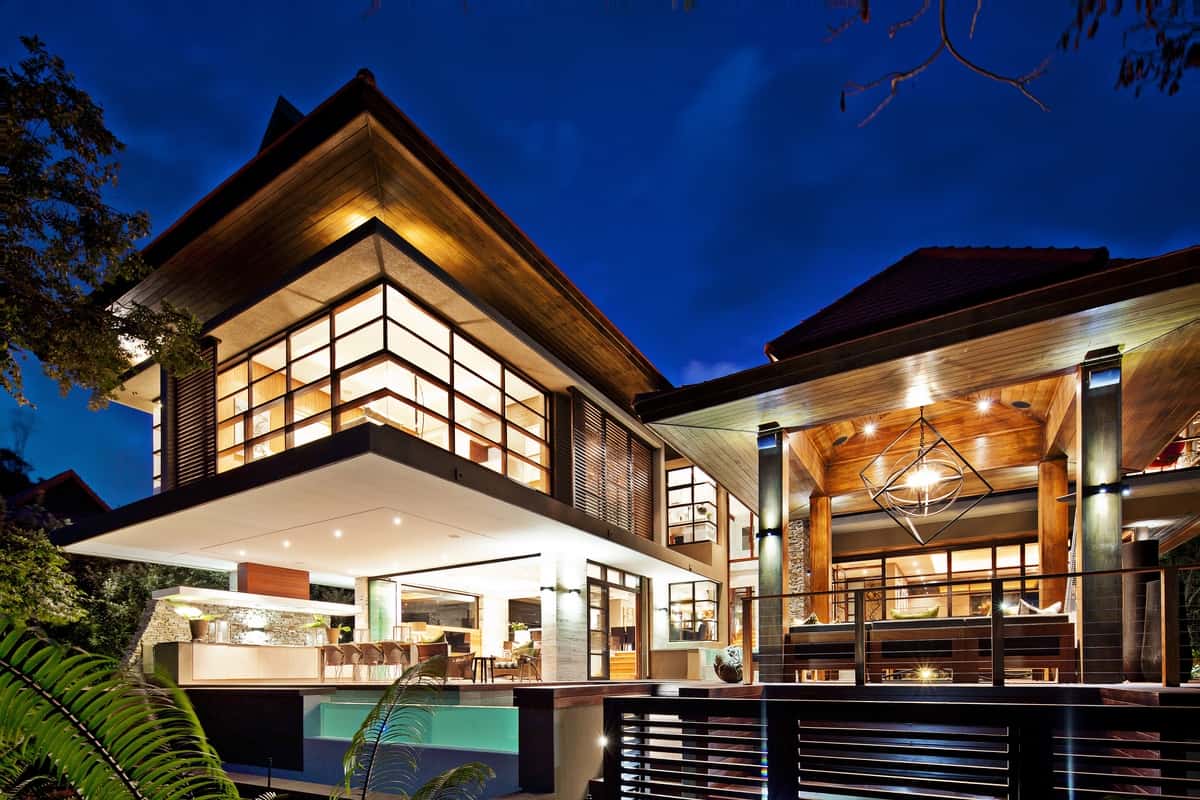
At night when the home is lit up the various architectural elements take on a sculptural aesthetic that is simply beautiful.

The panoramic views of the sub-tropical coastal Zimbali forest are also beautiful – especially from the cantilevered master suite. From here the Indian Ocean showcases spectacular sunsets.
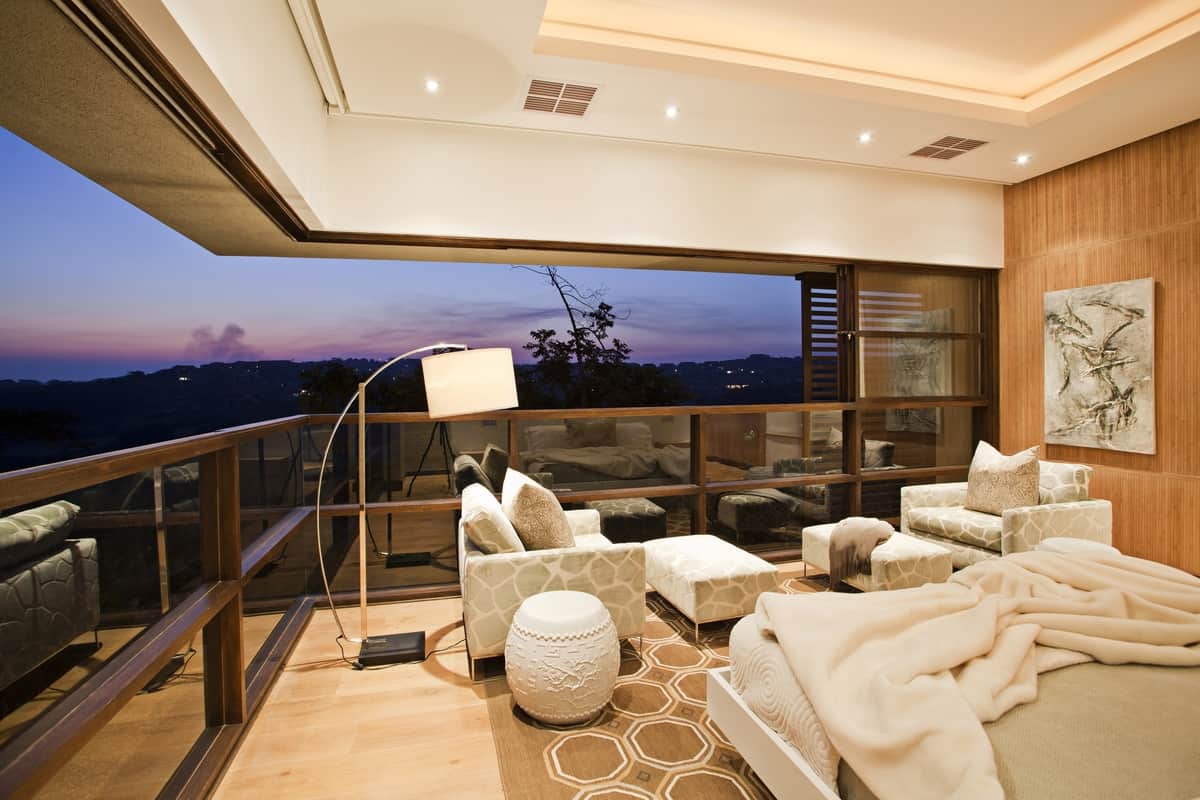
The master suite is wrapped on two sides with glazings that slide and stack out of the way, creating the feel of sleeping on an outdoor terrace rather then in an enclosed room.

The headboard is only pony wall height, allowing the magnificent views to be instantly seen from the doorway just past it. The Shoji screen doors lead to the main ensuite with a smaller toilet and sink room next to it, and the walk-in closet next to that.
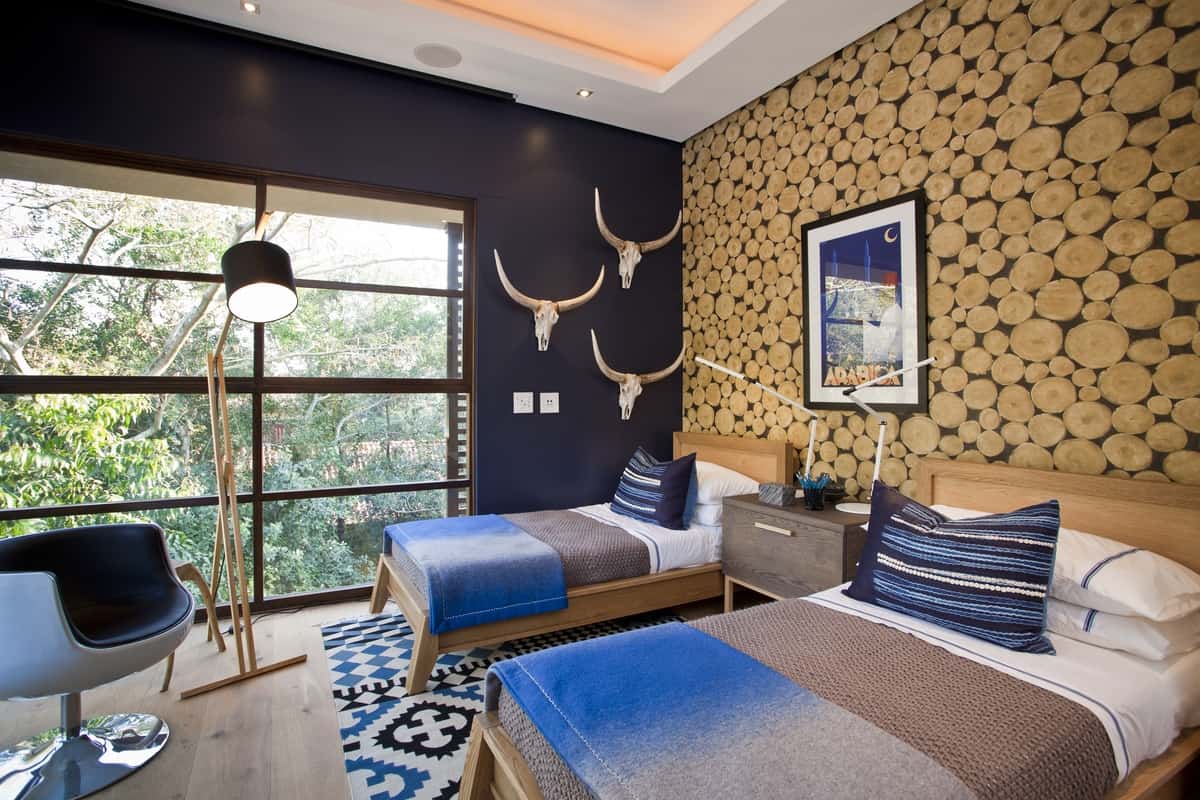
There are three more bedrooms upstairs – each with its own ensuite. This is the blue room.
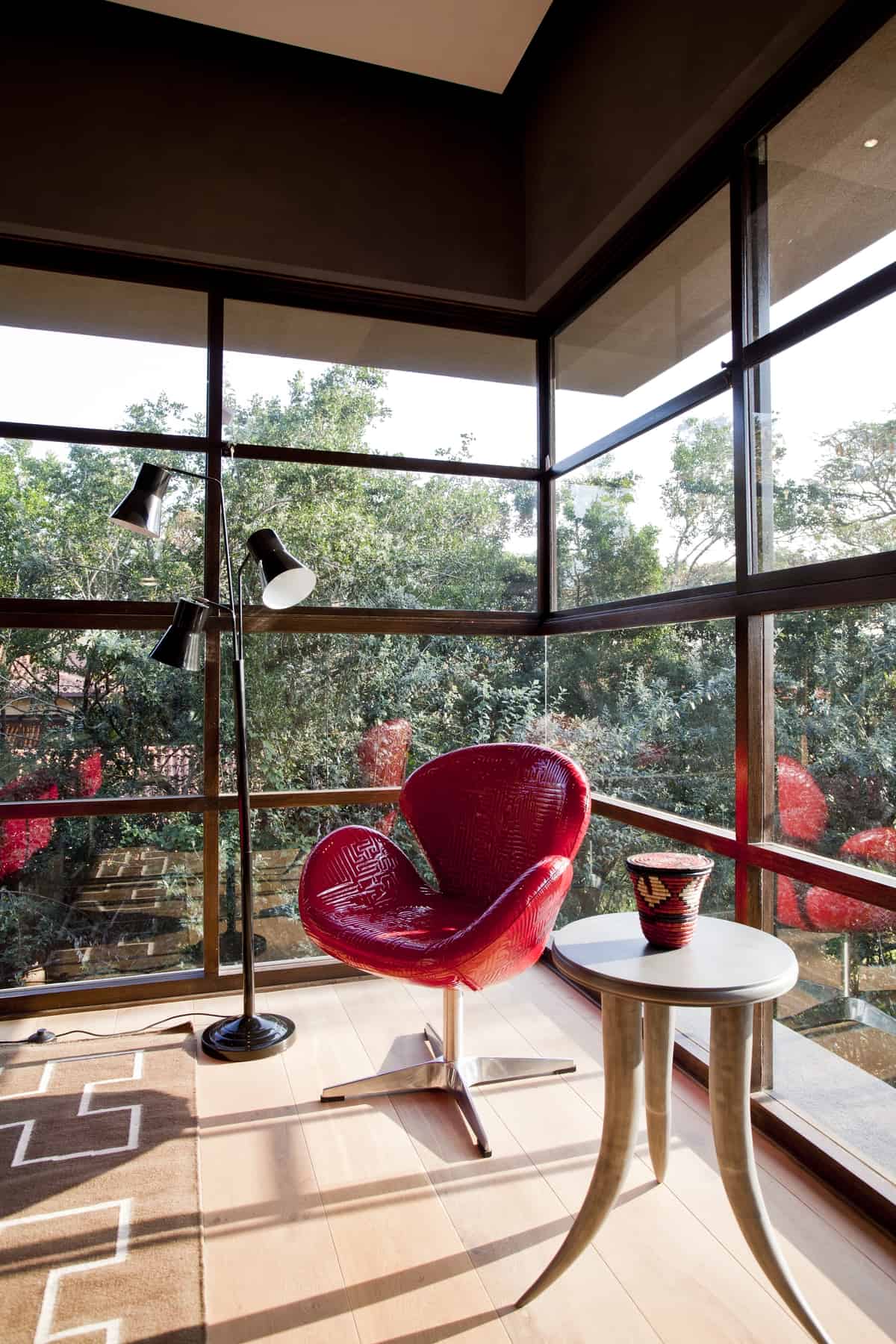
Another bedroom replaces the blue with a bold shade of red.

All four of the bedrooms lead to a centrally located office area.
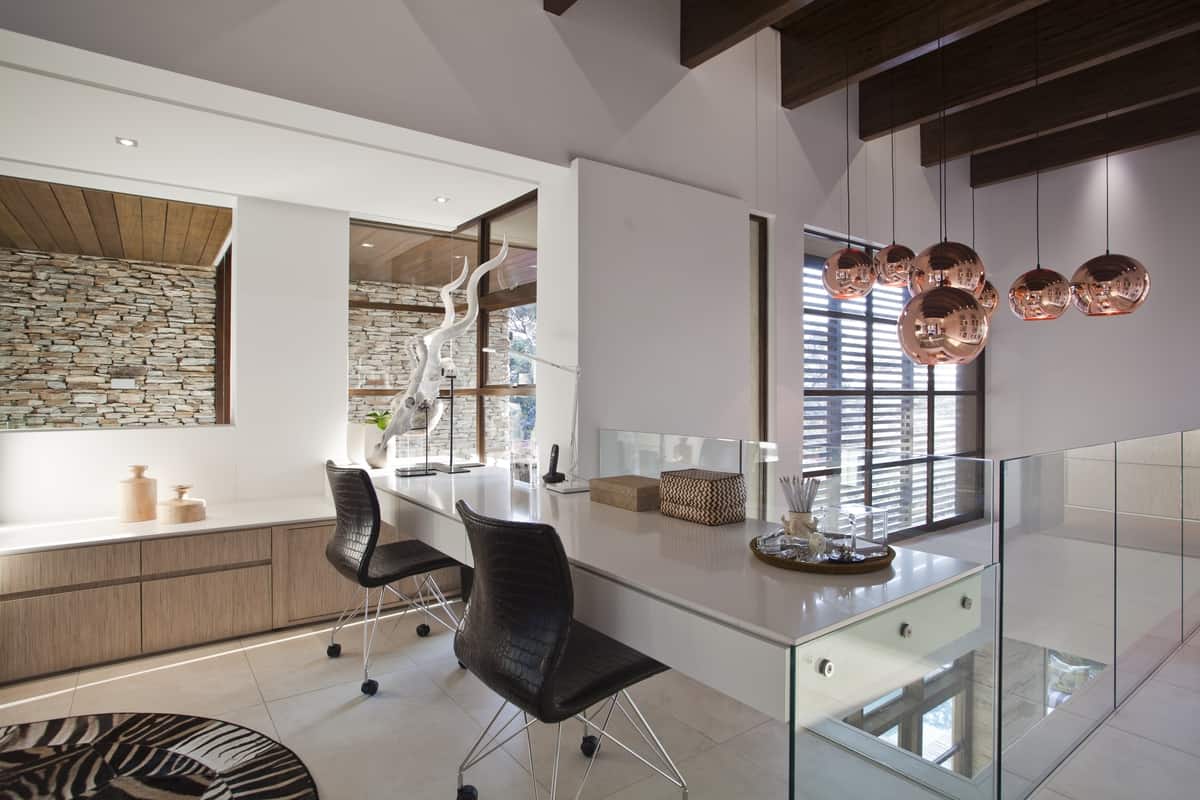
The office overlooks the stairwell and double volume foyer with its stunning vignette of copper globe pendants.
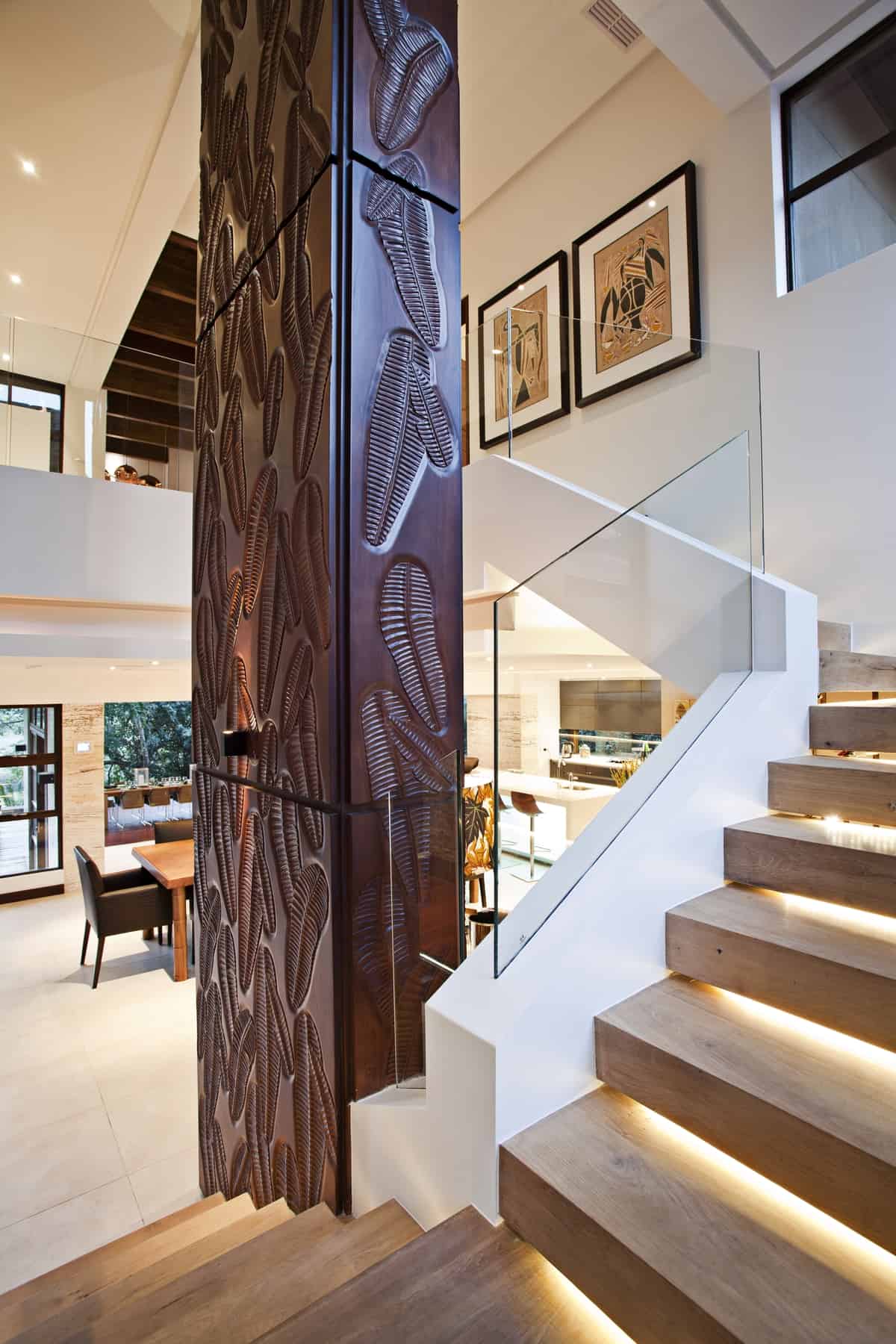
Aside from the beautiful copper pendants, the stairwell also features a post covered in relief carvings that pay homage to the smallest of forest creatures. It is as though the post is covered in fossils.
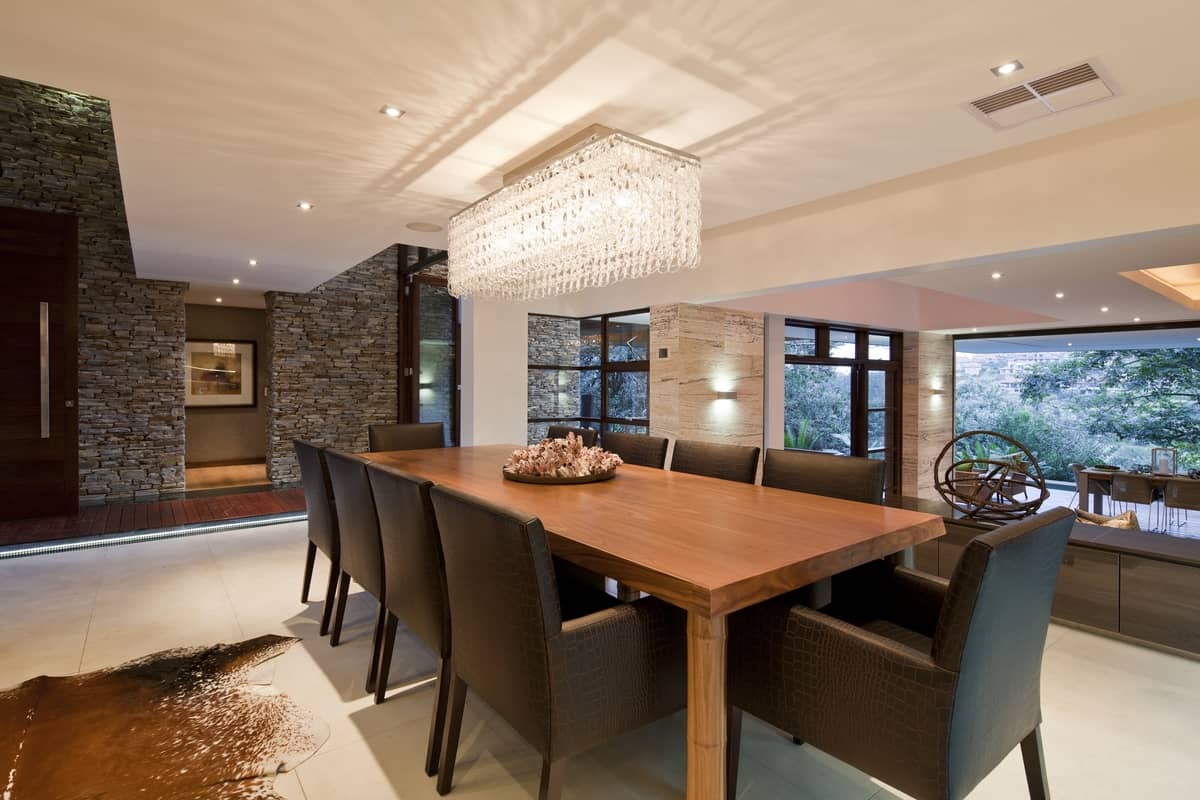
The stairwell leads to the large dining room and its impressive 10-seat table. Beside the dining room on one side is the kitchen and on the other is the bridged Koi pond. Just past the Koi pond is the living room.

The kitchen incorporates both light and dark cabinetry as well as a few other unique features, such as the lit frosted glass panel on the back of the island.
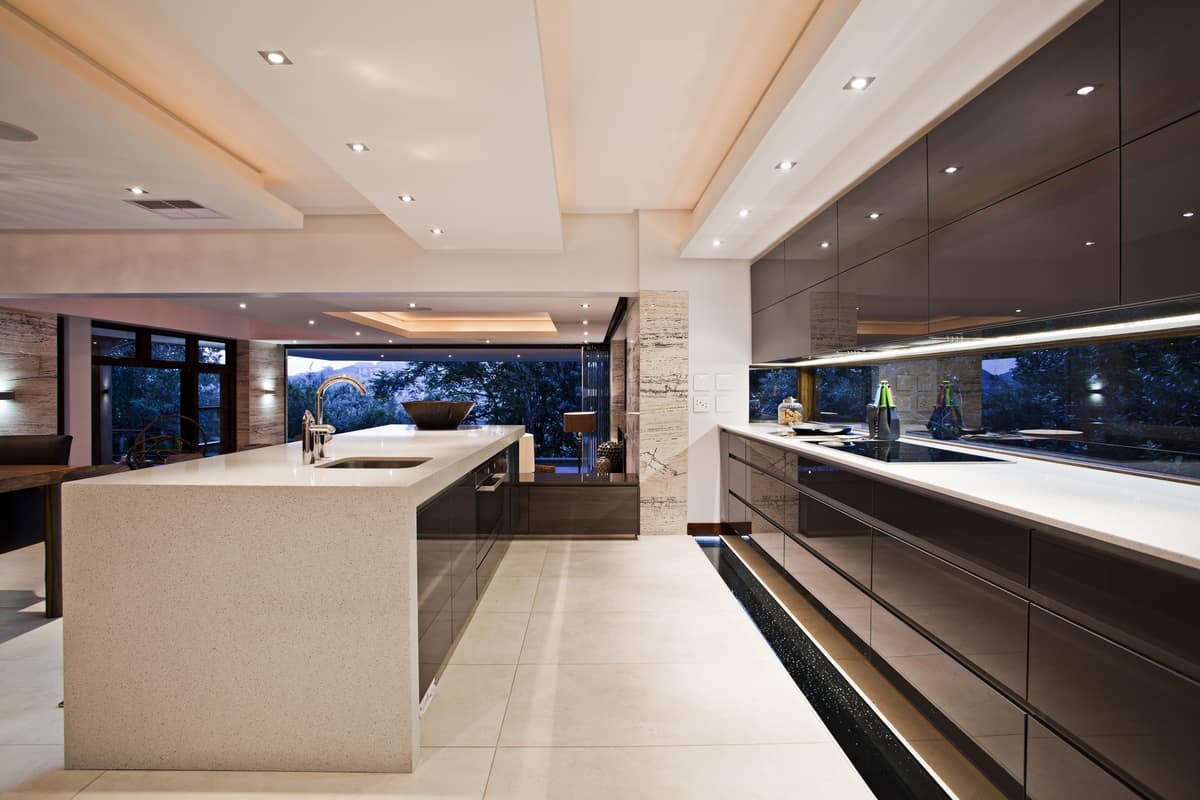
The kitchen also has a peak a boo Koi feature – can you see it? It is a glass strip within the floor that offers a view to a water tunnel running beneath the main floor. This tunnel connects the front and back Koi ponds.

The living room is five steps down. Here, floor to ceiling windows open to a private front deck while windows above the media console overlook the back Pagoda. There is also a view to the office area on the second floor.

Below grade is the media/rumpus room. Since this room is the noisiest, the walls are covered in sound proofing panels and the floor is covered in carpeting. It has no windows, only the ceiling lights that appear like stars in the sky.

Aside from its beautiful interior design, SGNW house is designed to enrich all five senses through the vistas of the indigenous forest, the fresh breezes, bird and wildlife calls, running water and natural architectural finishes. All these elements combine to create an atmosphere of peace and tranquility, as well as a sense of well-being. It is the Zen dream home that Metropole Architects’ clients dreamed of.

Metropole Architects
Photography by Grant Pitcher


